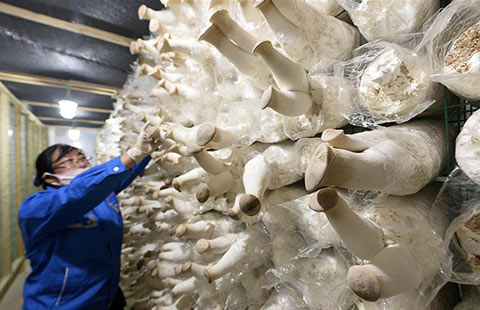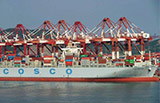Key article signals less policy easing in China: UBS
(Xinhua) Updated: 2016-05-10 16:05BEIJING - A prominent article carried by the Communist Party's official paper has signaled that Chinese authorities may rein in policy easing and stick to reforms, according to Swiss bank UBS.
The article, an interview with a "person with authority" published in the People's Daily on Monday, considered high leverage the root cause of financial risks and an infeasible tool to push for higher growth.
The term "person with authority" is usually reserved for high-ranking officials in People's Daily reports.
The article further confirmed the view that China's policy easing has peaked in the near term, UBS said in a research report.
It noted that the "person with authority" saw a need to abandon reliance on monetary expansion to solve structural problems.
The article came as signs of stabilization have begun to appear in China's economy, with state investment in infrastructure growing and bank lending at a record high.
The recent rebound in China's economic indicators was led by stronger policy support and property activity, which will increase medium-term risks, UBS said.
China's GDP slowed to 6.7 percent in the first quarter, the lowest since the dark days of the global financial crisis in 2009. But a slew of upbeat economic data in March raised hopes for a stronger turnaround than expected.
Monday's article ruled out the possibility of a quick, strong recovery in China, suggesting that the world's second largest economy may tick over at a moderate level for years to come.
The interview also indicates authorities want to "correct the impression that the government has scaled down reform in exchange for more leverage to support growth," said the UBS report.
Supply-side structural reform -- essentially cutting overcapacity and shifting into higher value-added manufacturing -- is "a lifeline for us in avoiding the middle-income trap," according to the People's Daily article.
Reform is a harder path, but a much more sustainable one, the article said.
Despite less policy stimulus expected, UBS believes China will maintain stronger growth in the second quarter of this year as the impact of earlier easing comes through, according to the report.
- New tariff policy for cross-border e-commerce likely to be postponed
- US-traded Chinese shares fall on uneasy comeback
- Chinese economy to grow 6.7% in Q2: think tank
- Intricate pictures carved on porcelain
- Qingdao port sees unprecedented congestion due to oil imports
- Baidu's objectivity compromised by profit model: investigation
- Taobao to crack down on fake luxury items from May 20
- Facebook wins a trademark suit in China

















